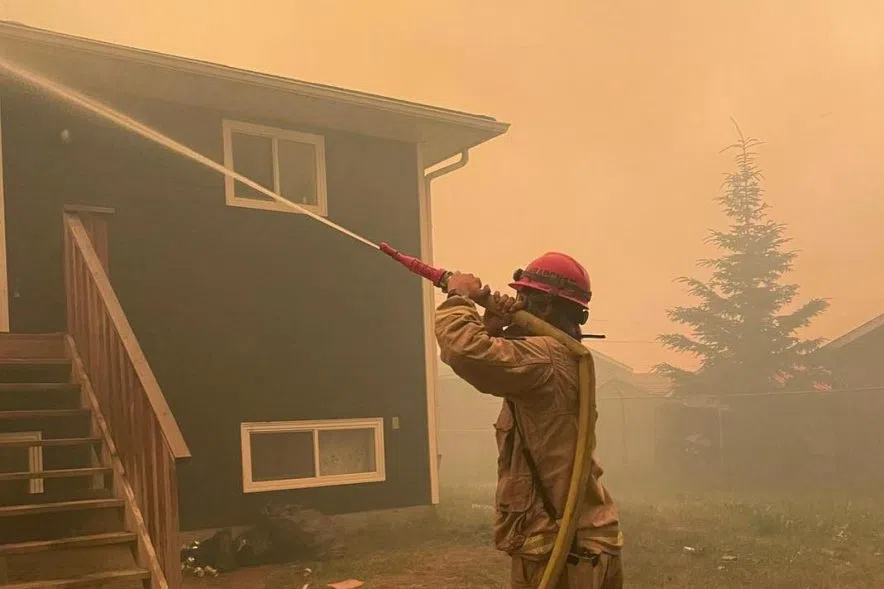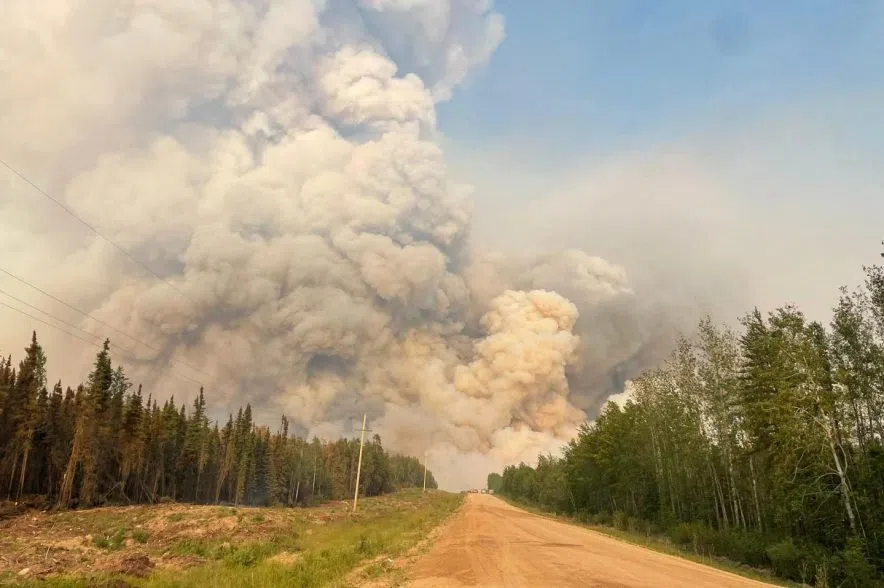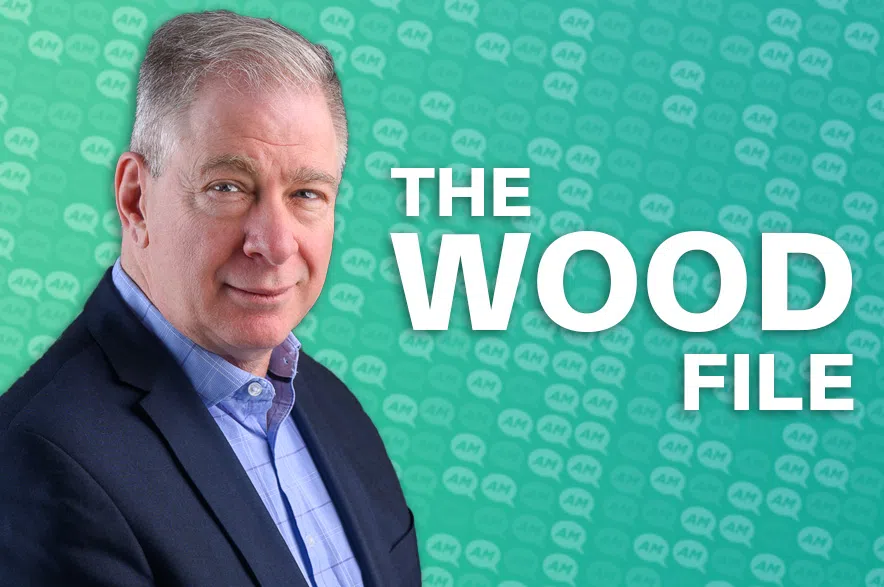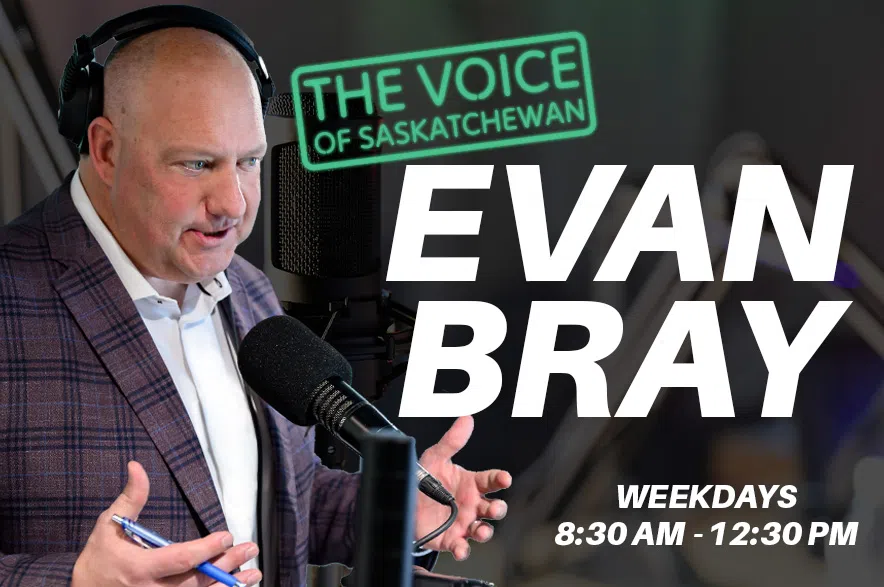After an early start to the fire season, the Saskatchewan Public Safety Agency is continuing to battle wildfires threatening communities across the province in mid-July.
This week, fire crews are working to contain blazes near Beauval. A pre-evacuation order is in place for Waskesiu, as fires burn in Prince Albert National Park.
Marlo Pritchard, president of the Saskatchewan Public Safety Agency, spoke with The Evan Bray Show on Tuesday morning about the province’s current wildfire situation.
Listen to the interview with Marlo Pritchard here:
This transcript has been edited for length and clarity.
PRITCHARD: Currently we’re showing 49 active fires. That’s 369 to date, which is well above the five year average of 268, and what you will have noticed over the last little while is that the number of active fires are going down, but a lot of that is resulting of some of these fires merging, and from an incident management perspective, it’s easier to have one fire that we’re managing as a team. So although it only shows 49 active fires, some of those are absolutely huge. You know, the Shoe fire, which has been burning for over over two months, is over 155,000 hectares. So, we have some big fires on the landscape right now.
EVAN BRAY: How do you prioritize? We have a couple fires merging. You’ve only got a finite number of resources. Even if you bring in the ones that are here from out of province to help volunteer fire crews, how do you prioritize where the resources go?
PRITCHARD: Well, it goes back to the prioritization process of looking at protecting life, of course, is number one. I’ve got to give just so (many) thank yous out to community leaders and fire departments, because, to date, we haven’t had any fatalities. So, that starts with our number one priorities. Then we look at communities, critical infrastructure, property, and then, last, of course, environment but really it works on those priorities. We set up value protection on whether they’re cabins or communities, and we really do our best to defend those properties, those values, those, you know, primary residents that are so important to people to try to mitigate or minimize the damage that wildfires are causing.
BRAY: Can we touch base on a couple specific areas? So Beauval was one area where, obviously it was quite critical recently. What’s the situation there?
PRITCHARD: It is still surrounded by fire. I hate to use that term, but there are a number of fires burning in the Beauval area. Last Thursday, a wind shift resulted in pushing the fire into that community. Kudos to the volunteer fire departments, the value protection, the contractors, SPSA staff. They stood their ground, and they were able to to watch the fire roll right through. They put out hot spots with minimal loss. There was a couple of vehicles that were destroyed, and some outbuildings by the ballpark but I spoke to the mayor of Beauval even before and after, and how he described it is “this fire is a beast” and some of the stories that came out of that is, again, doing our utmost best to minimize the loss. We did evacuate everyone out of the community before the fire had hit. But because of the coordinated and conservative efforts of some absolute heroes, we were able to minimize the loss to Beauval.
BRAY: What about the Prince Albert National Park? Last I heard the fire, the Buhl fire was about 40 kilometres away from Waskesiu.
PRITCHARD: It is still about 40 kilometres away from the Waskesiu town site. It is moving to the southeast but it is causing significant smoke in the area. As a precaution, between conversations with SPSA and the National Parks, there was a request for a voluntary evacuation, just to minimize should the weather shift. Right now, there’s no imminent danger and we’ve got in partnership with the National Parks and SPSA, we are currently working on some efforts to to manage and direct that fire away from the community.
BRAY: That is a summer destination for many people, and so knowing that while work is is underway to prevent them from being impacted by the fire itself. There’s still impact to the community if people are being told not to head in that direction.
PRITCHARD: Absolutely, and I can tell you that I spent a lot of time on the highways this spring, as you can understand, going to different communities, meeting with the SPSA and community leaders as these wildfires continue to impact many, many different communities, and one thing that I’ve noticed right from the beginning of the season is the lack of RVs and trailers travelling to the north just because of the wildfire and smoke. So it will have an impact on not only on Waskesiu but other businesses in the north as well.
BRAY: At one time, we had 15,000-16,000 evacuees being rehoused temporarily in the province. What’s the number at right now? How are we faring in terms of of helping those that have had to be removed from their homes?
PRITCHARD: SPSA is currently supporting about 800 evacuees and we’re aware of about 1,700, 1,800 others that have self evacuated to family and friends that have registered with us. We do have other communities that are in conversations with our emergency service officers assessing the situation on a daily basis whether they need to evacuate. We are seeing fire activity that is threatening communities that were evacuated earlier in May and may have to go out again. So, it is extremely challenging, but we are working with those communities. It is a community led activity, but with the extreme dry conditions and the wind does not seem to want to let up, and are definitely causing some challenges, and moving the fires around those communities.
BRAY: Who issues the evacuation notices when they happen?
PRITCHARD: It’s usually a community led event, but what is often the process is that they will reach out to SPSA and our regional directors or protection officers to get an assessment on what the forecast is and the activity of the fire. Then it really is the community leaders that decide on an evacuation, either with a third party provider like the Canadian Red Cross, or with us and then we help coordinate the movement of those individuals out of that property and out of danger, or out of that community into another city where we can put those individuals up in hotels.
BRAY: Manitoba just issued their second state of emergency. Are we at that point?
PRITCHARD: The Manitoba state of emergency is, in this case, was again to ask for federal assistance in removing some very isolated communities utilizing air assets from the armed forces. We’re not in that position right now. We are able to either evacuate using float planes, either led by the community or us, or busses at this point in time. We’re not in that same boat. But we do look at that every day, no different than a fire ban. We assess the conditions, we assess the conditions of the province, and should there be a requirement to do a declaration of emergency, that will be a conversation that I would have with my minister and we would make that decision at the time.
BRAY: Over the last week or so there’s been criticism from U.S. politicians on Canadian forestry management techniques. To be fair, they’ve criticized their own country’s forest management techniques as well. Is that a fair criticism? How involved is the SPSA when it comes to forestry management, and is that something that needs to be looked at heading into next year?
PRITCHARD: I’m sure it will be looked at, Evan. SPSA works with forestry, but that falls under the Environment Ministry more so than under SPSA. What we really talk about is around the fire starting and the mitigating of impacts of wildfire onto communities, using sprinklers, thinning out trees and overheads, utilizing less or fire resistant material when you’re building houses in the northern fringe and above. We work closely with forestry, but we’re not into the forestry management aspect.
BRAY: Last question I want to throw out, how people are doing? I’m talking about the people that are involved in the efforts to save the communities, the firefighters, but it’s much broader than that. There are a number of people, not only that are working and contracted under the SPSA, but volunteer in those communities. You have a sense they must be exhausted?
PRITCHARD: That’s probably a really good way of putting it. I mean, we’re really cognizant on the mental health and physical health. You can’t stay in a battle like this without taking breaks. So we really focus on individuals taking their time off, getting a couple days off because they need to recoup so that they can get back into it. But, I can tell you in meeting with SPSA staff and speaking to volunteer firefighters, there’s a determination and a willingness to continue to do everything that they possibly can, to protect life and property and also, we want to recognize the community leaders they’re just as tired. I mean, I’ve spoke to many community leaders that are sitting in their EOCs, day in day out, to help protect their communities and work with us and others. It is truly a Saskatchewan way of helping our neighbours and working together. But it is taking all of us to get through this, and just before we jump off, I do want to recognize that we’ve also got the Recovery Task Team. Government announced $20 million last week in regards to supporting those recovery efforts from those earlier fires, and that’s an another big piece of work that we’re undertaking right now to support those communities that have been so impacted from the earlier fires.












